X-Ray Fluorescence Spectroscopy for Laboratory Applications Michael Haschke
Visit to download the full and correct content document: https://ebookmass.com/product/x-ray-fluorescence-spectroscopy-for-laboratory-applic ations-michael-haschke/

More products digital (pdf, epub, mobi) instant download maybe you interests ...
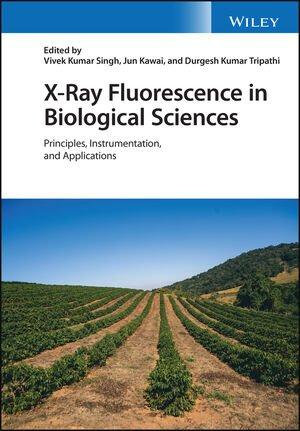
X-Ray Fluorescence in Biological Sciences: Principles, Instrumentation, and Applications Vivek K. Singh
https://ebookmass.com/product/x-ray-fluorescence-in-biologicalsciences-principles-instrumentation-and-applications-vivek-ksingh/

Handbook of Mineral Spectroscopy: X-Ray Photoelectron Spectra: Volume 1: X-ray Photoelectron Spectra 1st Edition J. Theo Kloprogge
https://ebookmass.com/product/handbook-of-mineral-spectroscopy-xray-photoelectron-spectra-volume-1-x-ray-photoelectronspectra-1st-edition-j-theo-kloprogge/
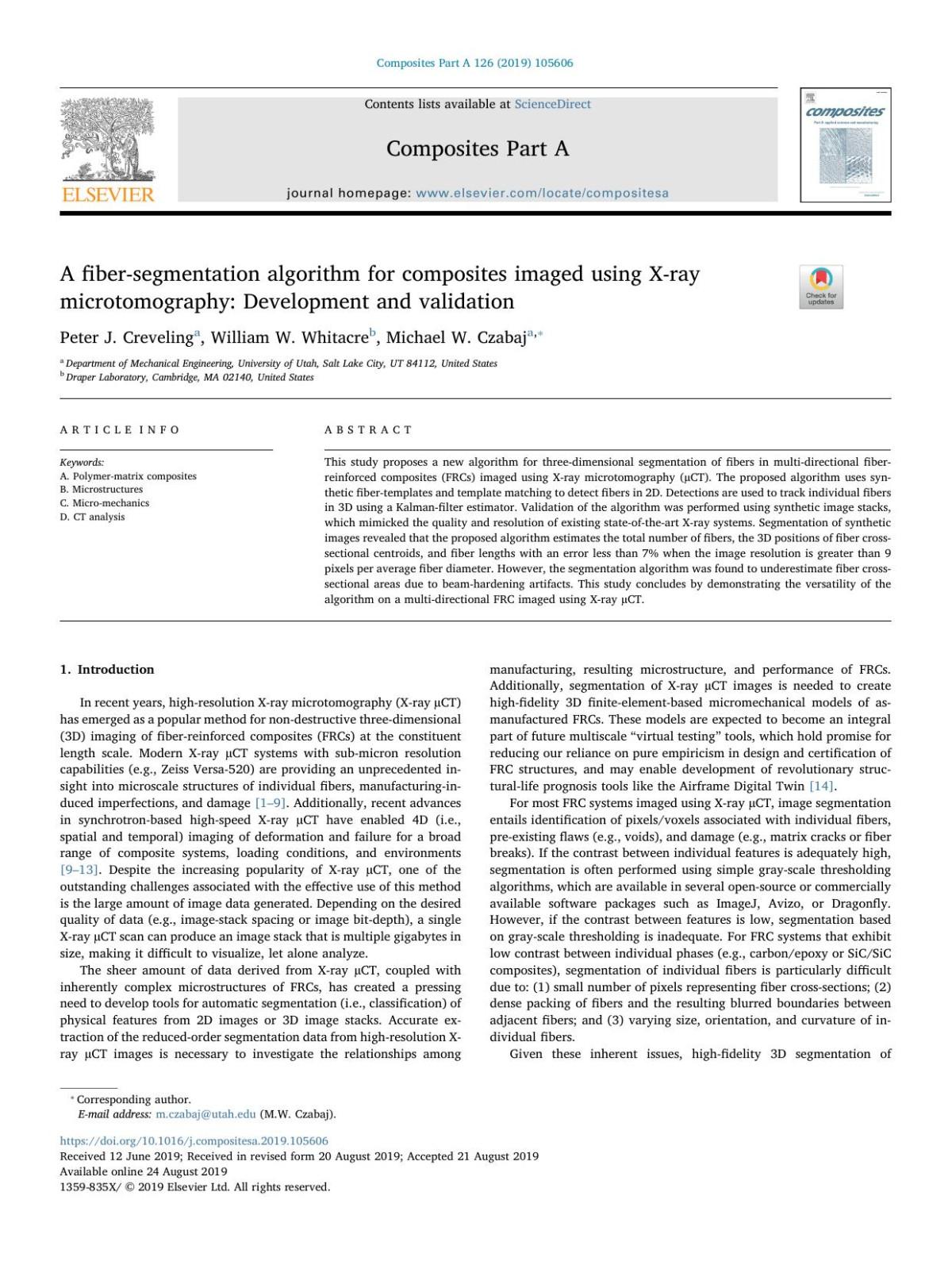
A fiber-segmentation algorithm for composites imaged using X-ray microtomography_ Development and validation Peter J. Creveling & William W. Whitacre & Michael W. Czabaj
https://ebookmass.com/product/a-fiber-segmentation-algorithm-forcomposites-imaged-using-x-ray-microtomography_-development-andvalidation-peter-j-creveling-william-w-whitacre-michael-w-czabaj/

Mössbauer Spectroscopy: Applications in Chemistry and Materials Science Yann Garcia
https://ebookmass.com/product/mossbauer-spectroscopyapplications-in-chemistry-and-materials-science-yann-garcia/
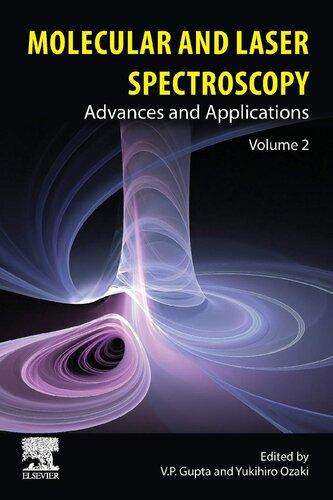
Molecular and Laser Spectroscopy: Advances and Applications: Volume 2 1st Edition V.P. Gupta (Editor)
https://ebookmass.com/product/molecular-and-laser-spectroscopyadvances-and-applications-volume-2-1st-edition-v-p-gupta-editor/

Vibrational Spectroscopy Applications in Biomedical, Pharmaceutical and Food Sciences 1st Edition Andrei A. Bunaciu
https://ebookmass.com/product/vibrational-spectroscopyapplications-in-biomedical-pharmaceutical-and-food-sciences-1stedition-andrei-a-bunaciu/
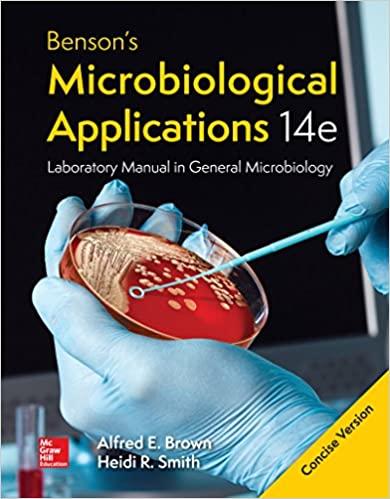
LooseLeaf Bensonu2019s Microbiological Applications Laboratory Manualu2013Concise Version
https://ebookmass.com/product/looseleaf-bensons-microbiologicalapplications-laboratory-manual-concise-version/
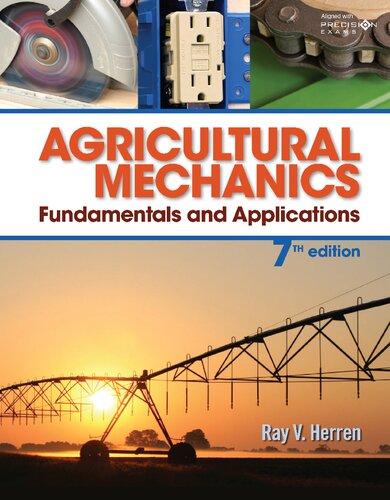
Agricultural mechanics : fundamentals and applications 7th Edition Ray V. Herren
https://ebookmass.com/product/agricultural-mechanicsfundamentals-and-applications-7th-edition-ray-v-herren/

Bartending For Dummies, 6th Edition Ray Foley
https://ebookmass.com/product/bartending-for-dummies-6th-editionray-foley/
X-rayFluorescenceSpectroscopyforLaboratoryApplications
X-rayFluorescenceSpectroscopyfor LaboratoryApplications
MichaelHaschke
JörgFlock
MichaelHaller
Authors
Dr.MichaelHaschke GünterAllee11 15345Eggersdorf Germany
Dr.JörgFlock ThyssenKruppStahlAG Kaiser-Wilhelm-Str.100 47166Duisburg Germany
Dipl.-Min.MichaelHaller CrossRoadsScientificLLC. Middletown CT UnitedStates
Allbookspublishedby Wiley-VCH arecarefullyproduced.Nevertheless, authors,editors,andpublisherdonot warranttheinformationcontainedin thesebooks,includingthisbook,to befreeoferrors.Readersareadvised tokeepinmindthatstatements,data, illustrations,proceduraldetailsorother itemsmayinadvertentlybeinaccurate.
LibraryofCongressCardNo.: appliedfor
BritishLibraryCataloguing-in-Publication Data
Acataloguerecordforthisbookis availablefromtheBritishLibrary.
Bibliographicinformationpublishedby theDeutscheNationalbibliothek TheDeutscheNationalbibliotheklists thispublicationintheDeutsche Nationalbibliografie;detailed bibliographicdataareavailableonthe Internetat <http://dnb.d-nb.de>
©2021Wiley-VCHVerlagGmbH& Co.KGaA,Boschstr.12,69469 Weinheim,Germany
Allrightsreserved(includingthoseof translationintootherlanguages).No partofthisbookmaybereproducedin anyform–byphotoprinting, microfilm,oranyothermeans–nor transmittedortranslatedintoa machinelanguagewithoutwritten permissionfromthepublishers. Registerednames,trademarks,etc.used inthisbook,evenwhennotspecifically markedassuch,arenottobe consideredunprotectedbylaw.
PrintISBN: 978-3-527-34463-5
ePDFISBN: 978-3-527-81660-6
ePubISBN: 978-3-527-81662-0
oBookISBN: 978-3-527-81663-7
CoverDesign Formgeber,Mannheim, Germany
Typesetting SPiGlobal,Chennai,India PrintingandBinding
Printedonacid-freepaper 10987654321
Contents
Preface xvii
ListofAbbreviationsandSymbols xix
AbouttheAuthors xxiii
1Introduction 1
2PrinciplesofX-raySpectrometry 7
2.1AnalyticalPerformance 7
2.2X-rayRadiationandTheirInteraction 11
2.2.1PartsofanX-raySpectrum 11
2.2.2IntensityoftheCharacteristicRadiation 13
2.2.3NomenclatureofX-rayLines 15
2.2.4InteractionofX-rayswithMatter 15
2.2.4.1Absorption 16
2.2.4.2Scattering 17
2.2.5DetectionofX-raySpectra 20
2.3TheDevelopmentofX-raySpectrometry 21
2.4CarryingOutanAnalysis 26
2.4.1AnalysisMethod 26
2.4.2SequenceofanAnalysis 27
2.4.2.1QualityoftheSampleMaterial 27
2.4.2.2SamplePreparation 27
2.4.2.3AnalysisTask 28
2.4.2.4MeasurementandEvaluationoftheMeasurementData 28
2.4.2.5CreationofanAnalysisReport 29
3SamplePreparation 31
3.1ObjectivesofSamplePreparation 31
3.2PreparationTechniques 32
3.2.1PreparationTechniquesforSolidSamples 32
3.2.2InformationDepthandAnalyzedVolume 32
3.2.3InfiniteThickness 36
3.2.4Contaminations 37
3.2.5Homogeneity 38
3.3PreparationofCompactandHomogeneousMaterials 39
3.3.1Metals 39
3.3.2Glasses 40
3.4SmallPartsMaterials 41
3.4.1GrindingofSmallPartsMaterial 42
3.4.2PreparationbyPouringLoosePowderintoaSampleCup 43
3.4.3PreparationoftheMeasurementSamplebyPressingintoaPellet 44
3.4.4PreparationoftheSamplebyFusionBeads 48
3.4.4.1ImprovingtheQualityoftheAnalysis 48
3.4.4.2StepsfortheProductionofFusionBeads 49
3.4.4.3LossofIgnition 53
3.4.4.4QualityCriteriaforFusionBeads 53
3.4.4.5PreparationofSpecialMaterials 54
3.5LiquidSamples 55
3.5.1DirectMeasurementofLiquids 55
3.5.2SpecialProcessingProceduresforLiquidSamples 58
3.6BiologicalMaterials 58
3.7SmallParticles,Dust,andAerosols 59
4XRFInstrumentTypes 61
4.1GeneralDesignofanX-raySpectrometer 61
4.2ComparisonofWavelength-andEnergy-DispersiveX-Ray Spectrometers 63
4.2.1DataAcquisition 63
4.2.2Resolution 64
4.2.2.1ComparisonofWavelength-andEnergy-Dispersive Spectrometry 64
4.2.2.2ResolutionofWDSInstruments 66
4.2.2.3ResolutionofEDSInstruments 68
4.2.3DetectionEfficiency 70
4.2.4CountRateCapability 71
4.2.4.1OptimumThroughputinEDSpectrometers 71
4.2.4.2SaturationEffectsinWDSs 72
4.2.4.3OptimalSensitivityofEDSpectrometers 73
4.2.4.4EffectofthePulseThroughputontheMeasuringTime 74
4.2.5RadiationFlux 75
4.2.6SpectraArtifacts 76
4.2.6.1EscapePeaks 76
4.2.6.2Pile-UpPeak 77
4.2.6.3DiffractionPeaks 77
4.2.6.4ShelfandTail 79
4.2.7MechanicalDesignandOperatingCosts 79
4.2.8SettingParameters 80
4.3TypeofInstruments 80
4.3.1EDInstruments 81
4.3.1.1HandheldInstruments 82
4.3.1.2PortableInstruments 83
4.3.1.3TabletopInstruments 84
4.3.2Wavelength-DispersiveInstruments 85
4.3.2.1SequentialSpectrometers 85
4.3.2.2MultichannelSpectrometers 87
4.3.3SpecialTypeX-RaySpectrometers 87
4.3.3.1TotalReflectionInstruments 88
4.3.3.2ExcitationbyMonoenergeticRadiation 90
4.3.3.3ExcitationwithPolarizedRadiation 91
4.3.3.4InstrumentsforPosition-SensitiveAnalysis 93
4.3.3.5MacroX-RayFluorescenceSpectrometer 94
4.3.3.6MicroX-RayFluorescencewithConfocalGeometry 95
4.3.3.7High-ResolutionX-RaySpectrometers 96
4.3.3.8AngleResolvedSpectroscopy–GrazingIncidenceandGrazing Exit 96
4.4CommerciallyAvailableInstrumentTypes 98
5MeasurementandEvaluationofX-raySpectra 99
5.1InformationContentoftheSpectra 99
5.2ProceduralStepstoExecuteaMeasurement 101
5.3SelectingtheMeasurementConditions 102
5.3.1OptimizationCriteriafortheMeasurement 102
5.3.2TubeParameters 103
5.3.2.1TargetMaterial 103
5.3.2.2ExcitationConditions 104
5.3.2.3InfluencingtheEnergyDistributionofthePrimarySpectrum 105
5.3.3MeasurementMedium 107
5.3.4MeasurementTime 108
5.3.4.1MeasurementTimeandStatisticalError 108
5.3.4.2MeasurementStrategies 108
5.3.4.3RealandLiveTime 109
5.3.5X-rayLines 110
5.4DeterminationofPeakIntensity 112
5.4.1IntensityData 112
5.4.2TreatmentofPeakOverlaps 112
5.4.3SpectralBackground 114
5.5QuantificationModels 117
5.5.1GeneralRemarks 117
5.5.2ConventionalCalibrationModels 118
5.5.3FundamentalParameterModels 121
5.5.4MonteCarloQuantifications 124
5.5.5HighlyPreciseQuantificationbyReconstitution 124
5.5.6EvaluationofanAnalyticalMethod 126
5.5.6.1DegreeofDetermination 126
5.5.6.2WorkingRange,LimitsofDetection(LOD)andof Quantification 127
5.5.6.3FigureofMerit 129
5.5.7ComparisonoftheVariousQuantificationModels 129
5.5.8AvailableReferenceMaterials 131
5.5.9ObtainableAccuracies 132
5.6CharacterizationofLayeredMaterials 133
5.6.1GeneralFormoftheCalibrationCurve 133
5.6.2BasicConditionsforLayerAnalysis 135
5.6.3QuantificationModelsfortheAnalysisofLayers 138
5.7ChemometricMethodsforMaterialCharacterization 140
5.7.1SpectraMatchingandMaterialIdentification 141
5.7.2PhaseAnalysis 141
5.7.3RegressionMethods 143
5.8CreationofanApplication 143
5.8.1AnalysisofUnknownSampleQualities 143
5.8.2RepeatedAnalysesonKnownSamples 144
6AnalyticalErrors 149
6.1GeneralConsiderations 149
6.1.1PrecisionofaMeasurement 151
6.1.2Long-TermStabilityoftheMeasurements 153
6.1.3PrecisionandProcessCapability 154
6.1.4TruenessoftheResult 156
6.2TypesofErrors 156
6.2.1RandomlyDistributedErrors 157
6.2.2SystematicErrors 158
6.3AccountingforSystematicErrors 159
6.3.1TheConceptofMeasurementUncertainties 159
6.3.2ErrorPropagation 160
6.3.3DeterminationofMeasurementUncertainties 161
6.3.3.1Bottom-UpMethod 161
6.3.3.2Top-DownMethod 162
6.4RecordingofErrorInformation 164
7OtherElementAnalyticalMethods 167
7.1Overview 167
7.2AtomicAbsorptionSpectrometry(AAS) 168
7.3OpticalEmissionSpectrometry 169
7.3.1ExcitationwithaSparkDischarge(OES) 169
7.3.2ExcitationinanInductivelyCoupledPlasma(ICP-OES) 170
7.3.3Laser-InducedBreakdownSpectroscopy(LIBS) 171
7.4MassSpectrometry(MS) 172
7.5X-RaySpectrometrybyParticleExcitation(SEM-EDS,PIXE) 173
7.6ComparisonofMethods 175
8RadiationProtection 177
8.1BasicPrinciples 177
8.2EffectsofIonizingRadiationonHumanTissue 178
8.3NaturalRadiationExposure 179
8.4RadiationProtectionRegulations 181
8.4.1LegalRegulations 181
9AnalysisofHomogeneousSolidSamples 183
9.1IronAlloys 183
9.1.1AnalyticalProblemandSamplePreparation 183
9.1.2AnalysisofPigandCastIron 184
9.1.3AnalysisofLow-AlloySteel 185
9.1.4AnalysisofHigh-AlloySteel 187
9.2Ni–Fe–CoAlloys 188
9.3CopperAlloys 189
9.3.1AnalyticalTask 189
9.3.2AnalysisofCompactSamples 189
9.3.3AnalysisofDissolvedSamples 189
9.4AluminumAlloys 191
9.5SpecialMetals 192
9.5.1Refractories 192
9.5.1.1AnalyticalProblem 192
9.5.1.2SamplePreparationofHardMetals 192
9.5.1.3AnalysisofHardMetals 193
9.5.2TitaniumAlloys 194
9.5.3SolderAlloys 194
9.6PreciousMetals 195
9.6.1AnalysisofPreciousMetalJewelry 195
9.6.1.1AnalyticalTask 195
9.6.1.2SampleShapeandPreparation 196
9.6.1.3AnalyticalEquipment 197
9.6.1.4AccuracyoftheAnalysis 198
9.6.2AnalysisofPureElements 198
9.7GlassMaterial 199
9.7.1AnalyticalTask 199
9.7.2SamplePreparation 200
9.7.3MeasurementEquipment 202
9.7.4AchievableAccuracies 202
9.8Polymers 203
9.8.1AnalyticalTask 203
9.8.2SamplePreparation 204
9.8.3Instruments 205
9.8.4QuantificationProcedures 205
9.8.4.1Standard-BasedMethods 205
9.8.4.2ChemometricMethods 206
9.9AbrasionAnalysis 209
10AnalysisofPowderSamples 213
10.1GeologicalSamples 213
x Contents
10.1.1AnalyticalTask 213
10.1.2SamplePreparation 214
10.1.3MeasurementTechnique 215
10.1.4DetectionLimitsandTrueness 215
10.2Ores 216
10.2.1AnalyticalTask 216
10.2.2IronOres 216
10.2.3Mn,Co,Ni,Cu,Zn,andPbOres 217
10.2.4BauxiteandAlumina 218
10.2.5OresofPreciousMetalsandRareEarths 219
10.3SoilsandSewageSludges 221
10.3.1AnalyticalTask 221
10.3.2SamplePreparation 221
10.3.3MeasurementTechnologyandAnalyticalPerformance 222
10.4QuartzSand 223
10.5Cement 223
10.5.1AnalyticalTask 223
10.5.2SamplePreparation 224
10.5.3MeasurementTechnology 225
10.5.4AnalyticalPerformance 226
10.5.5DeterminationofFreeLimeinClinker 227
10.6CoalandCoke 227
10.6.1AnalyticalTask 227
10.6.2SamplePreparation 228
10.6.3MeasurementTechnologyandAnalyticalPerformance 229
10.7Ferroalloys 230
10.7.1AnalyticalTask 230
10.7.2SamplePreparation 230
10.7.3AnalysisTechnology 232
10.7.4AnalyticalPerformance 234
10.8Slags 235
10.8.1AnalyticalTask 235
10.8.2SamplePreparation 235
10.8.3MeasurementTechnologyandAnalyticalAccuracy 236
10.9CeramicsandRefractoryMaterials 237
10.9.1AnalyticalTask 237
10.9.2SamplePreparation 237
10.9.3MeasurementTechnologyandAnalyticalPerformance 238
10.10Dusts 239
10.10.1AnalyticalProblemandDustCollection 239
10.10.2Measurement 242
10.11Food 242
10.11.1AnalyticalTask 242
10.11.2MonitoringofAnimalFeed 243
10.11.3ControlofInfantFood 244
10.12Pharmaceuticals 245
10.12.1AnalyticalTask 245
10.12.2SamplePreparationandAnalysisMethod 245
10.13SecondaryFuels 246
10.13.1AnalyticalTask 246
10.13.2SamplePreparation 247
10.13.2.1SolidSecondaryRawMaterials 247
10.13.2.2LiquidSecondaryRawMaterials 249
10.13.3InstrumentationandMeasurementConditions 250
10.13.4MeasurementUncertaintiesintheAnalysisofSolidSecondaryRaw Materials 251
10.13.5MeasurementUncertaintiesfortheAnalysisofLiquidSecondaryRaw Materials 252
11AnalysisofLiquids 253
11.1MultielementAnalysisofLiquids 254
11.1.1AnalyticalTask 254
11.1.2SamplePreparation 254
11.1.3MeasurementTechnology 254
11.1.4Quantification 255
11.2FuelsandOils 255
11.2.1AnalysisofToxicElementsinFuels 256
11.2.1.1MeasurementTechnology 256
11.2.1.2AnalyticalPerformance 258
11.2.2AnalysisofAdditivesinLubricatingOils 258
11.2.3IdentificationofAbrasiveParticlesinUsedLubricants 260
11.3TraceAnalysisinLiquids 261
11.3.1AnalyticalTask 261
11.3.2PreparationbyDrying 261
11.3.3Quantification 262
11.4SpecialPreparationTechniquesforLiquidSamples 263
11.4.1DeterminationofLightElementsinLiquids 263
11.4.2EnrichmentThroughAbsorptionandComplexFormation 264
12TraceAnalysisUsingTotalReflectionX-Ray Fluorescence 267
12.1SpecialFeaturesofTXRF 267
12.2SamplePreparationforTXRF 269
12.3EvaluationoftheSpectra 271
12.3.1SpectrumPreparationandQuantification 271
12.3.2ConditionsforNeglectingtheMatrixInteraction 272
12.3.3LimitsofDetection 273
12.4TypicalApplicationsoftheTXRF 274
12.4.1AnalysisofAqueousSolutions 274
12.4.1.1AnalyticalProblemandPreparationPossibilities 274
12.4.1.2Example:AnalysisofaFreshWaterStandardSample 275
12.4.1.3Example:DetectionofMercuryinWater 277
12.4.2AnalysisoftheSmallestSampleQuantities 278
12.4.2.1Example:PigmentAnalysis 278
12.4.2.2Example:AerosolAnalysis 279
12.4.2.3Example:AnalysisofNanoparticles 279
12.4.3TraceElementAnalysisonHumanOrgans 280
12.4.3.1Example:AnalysisofBloodandBloodSerum 280
12.4.3.2Example:AnalysisofTraceElementsinBodyTissue 282
12.4.4TraceAnalysisofInorganicandOrganicChemicalProducts 283
12.4.5AnalysisofSemiconductorElectronics 284
12.4.5.1Ultra-TraceAnalysisonSiWaferswithVPD 284
12.4.5.2DepthProfileAnalysisbyEtching 285
13NonhomogeneousSamples 287
13.1MeasurementModes 287
13.2InstrumentRequirements 288
13.3DataEvaluation 290
14CoatingAnalysis 291
14.1AnalyticalTask 291
14.2SampleHandling 292
14.3MeasurementTechnology 293
14.4TheAnalysisExamplesofCoatedSamples 294
14.4.1Single-LayerSystems:EmissionMode 294
14.4.2Single-LayerSystems:AbsorptionMode 297
14.4.3Single-LayerSystems:RelativeMode 298
14.4.3.1AnalyticalProblem 298
14.4.3.2VariationoftheSpecifiedWorkingDistance 298
14.4.3.3SampleSizeandSpotSizeMismatch 299
14.4.3.4Non-detectableElementsintheLayer:NiPLayers 300
14.4.4CharacterizationofUltrathinLayers 302
14.4.5MultilayerSystems 304
14.4.5.1LayerSystems 304
14.4.5.2MeasurementTechnology 305
14.4.5.3Example:AnalysisofCIGSSolarCells 305
14.4.5.4Example:AnalysisofSolderStructures 306
14.4.6SampleswithUnknownCoatingSystems 307
14.4.6.1PreparationofCrossSections 308
14.4.6.2ExcitationatGrazingIncidencewithVaryingAngles 309
14.4.6.3MeasurementinConfocalGeometry 311
15SpotAnalyses 313
15.1ParticleAnalyses 313
15.1.1AnalyticalTask 313
15.1.2SamplePreparation 314
15.1.3AnalysisTechnology 315
15.1.4ApplicationExample:WearParticlesinUsedOil 315
15.1.5ApplicationExample:IdentificationofGlassParticlesby Chemometrics 316
15.2IdentificationofInclusions 318
15.3MaterialIdentificationwithHandheldInstruments 318
15.3.1AnalyticalTasks 318
15.3.2AnalysisTechnology 319
15.3.3SamplePreparationandTestConditions 320
15.3.4AnalyticalAccuracy 320
15.3.5ApplicationExamples 321
15.3.5.1Example:LeadinPaint 321
15.3.5.2Example:ScrapSorting 321
15.3.5.3Example:MaterialInspectionandSorting 322
15.3.5.4Example:PreciousMetalAnalysis 322
15.3.5.5Example:ProspectingandScreeninginGeology 323
15.3.5.6Example:InvestigationofWorksofArt 323
15.4DeterminationofToxicElementsinConsumerProducts:RoHS Monitoring 324
15.4.1AnalyticalTask 324
15.4.2AnalysisTechnology 325
15.4.3AnalysisAccuracy 327
15.5ToxicElementsinToys:ToysStandard 328
15.5.1AnalyticalTask 328
15.5.2SamplePreparation 328
15.5.3AnalysisTechnology 330
16AnalysisofElementDistributions 331
16.1GeneralRemarks 331
16.2MeasurementConditions 332
16.3Geology 333
16.3.1SamplesTypes 333
16.3.2SamplePreparationandPositioning 333
16.3.3MeasurementsonCompactRockSamples 334
16.3.3.1SumSpectrumandElementDistributions 334
16.3.3.2ObjectSpectra 335
16.3.3.3TreatmentofLineOverlaps 336
16.3.3.4MaximumPixelSpectrum 339
16.3.4ThinSectionsofGeologicalSamples 340
16.4Electronics 342
16.5ArcheometricInvestigations 344
16.5.1AnalyticalTasks 344
16.5.2SelectionofanAppropriateSpectrometer 346
16.5.3InvestigationsofCoins 347
16.5.4InvestigationsofPaintingPigments 349
16.6HomogeneityTests 350
16.6.1AnalyticalTask 350
16.6.2HomogeneityStudiesUsingDistributionAnalysis 351
16.6.3HomogeneityStudiesUsingMulti-pointMeasurements 352
17SpecialApplicationsoftheXRF 355
17.1High-ThroughputScreeningandCombinatorialAnalysis 355
17.1.1High-ThroughputScreening 355
17.1.2CombinatorialAnalysisforDrugDevelopment 357
17.2ChemometricSpectralEvaluation 358
17.3High-ResolutionSpectroscopyforSpeciationAnalysis 361
17.3.1AnalyticalTask 361
17.3.2InstrumentTechnology 361
17.3.3ApplicationExamples 362
17.3.3.1AnalysisofDifferentSulfurCompounds 362
17.3.3.2SpeciationofAluminumInclusionsinSteel 363
17.3.3.3DeterminationofSiO2 inSiC 365
18ProcessControlandAutomation 367
18.1GeneralObjectives 367
18.2Off-LineandAt-LineAnalysis 369
18.2.1SampleSupplyandAnalysis 369
18.2.2AutomatedSamplePreparation 371
18.3In-LineandOn-LineAnalysis 376
19QualityManagementandValidation 379
19.1Motivation 379
19.2Validation 380
19.2.1Parameters 384
19.2.2Uncertainty 385
AppendixATables 387
AppendixBImportantInformation 419
B.1CoordinatesofMainManufacturersofInstrumentsandPreparation Tools 419
B.2MainSuppliersofStandardMaterials 422
B.2.1GeologicalMaterialsandMetals 422
B.2.2StratifiedMaterials 423
B.2.3PolymerStandards 424
B.2.4HighPurityMaterials 424
B.2.5PreciousMetalAlloys 425
B.3ImportantWebsites 425
B.3.1InformationAboutX-RayAnalyticsandFundamental Parameters 425
B.3.2InformationAboutReferenceMaterials 426
B.3.3ScientificJournals 427
B.4LawsandActs,WhichAreImportantforX-RayFluorescence 427
B.4.1RadiationProtection 427
B.4.2RegulationsforEnvironmentalControl 428
B.4.3RegulationsforPerformingAnalysis 428
B.4.4UseofX-rayFluorescencefortheChemicalAnalysis 428
B.4.4.1GeneralRegulations 428
B.4.4.2AnalysisofMinerals 429
B.4.4.3AnalysisofOils,LiquidFuels,Grease 430
B.4.4.4AnalysisofSolidFuels 432
B.4.4.5CoatingAnalysis 433
B.4.4.6Metallurgy 433
B.4.4.7AnalysisofElectronicComponents 434
References 435
Index 453
Preface
ThediscoveryofX-raysbyWilhelmConradRöntgendatesbacktonearly 125years.Despitetheir“age,”theresearchanddiscoveriesthathavebeenmade inthepastandtodaymakeX-raysoneofthemostpowerfulanalyticaltools availabletoday.Thediscoveryofthispartoftheelectromagneticspectrumhas seenmanyapplications.First,usedformedicalpurposesbyRöntgenhimself, whofoundthatthenewlydiscoveredrayscanpenetrateandatthesametimecan beabsorbedbydifferenttypesofmatter.Therefore,itwasnowpossibletoimage thehumanbody.Later,MaxvonLaueshowedthattheyareahigher-frequency partoftheelectromagneticspectrumwherenaturallightisalsoapartof.Thisled tohisworkondiffractionofX-rays,whichtothisdayisusedtoinvestigatethe crystallineandamorphousstructureofsolids.Finally,Moseleyfoundthatevery elementemittedcharacteristicX-rayradiationthatcanbeusedtodetermine thequalitativeandquantitativeelementalcompositionofmaterialsofdifferent types.Thisistheapplicationthatismostinterestingforus–thespectroscopists.
X-rayfluorescencespectroscopyhasnowdevelopedintoananalyticaltechniquethat,duetoitsrobustnessandflexibility,canbeusedinalmostallscientific areas,inresearch,andaboveallinqualitycontrolinindustrialproduction.The techniquehasbecomesopowerfulbecauseofitsabilitytoanalyzemanydifferent materialtypes,havingawiderangeofelementsandconcentrations.Thesample preparationismostlysimpleorevennotrequired,thereforemakingitpossible tofullyautomatetheentireanalysisprocess.
Evenwhenonehasmanyyearsofexperiencewiththemethod,specificexpertiseisstillrequiredtoachievereliableresults,especiallysincetheapplicationsfor X-rayfluorescencespectrometryhavebeensignificantlyexpandedinrecentyears duetonewcomponentsbeingdevelopedandbecomingcommerciallyavailable forX-rayspectrometers.ExamplesofsuchareX-rayoptics,newtypesofdetectors,andtheavailabilityofpowerfulcomputingtechniqueandsoftwaresolutions.
Acombinationoftheoreticalknowledgeandpracticalknow-howaboutthe materialstobeexamined,thebestpracticesforsamplepreparation,andthe mostsuitablemeasuringinstrumentatoptimalmeasurementconditionsis requiredtomakethemostpreciseandtrueanalysisresults.Theintentionof thisbookistosummarizetheexperiencesoftheanalyticalcommunityworking withX-rayfluorescence.Formanyyearsthiscommunityhasconvenedatglobal annualusermeetingsandconferencesforX-rayfluorescencespectrometry, coveringalltypesofapplicationsofX-rayspectroscopy.Theworkpresented
atthesemeetingssharesnewdevelopmentsinthefieldofdevicetechnology andprovidesinformationontheanalyticalcapabilitiesofX-rayfluorescencefor knownapplications,forinstance,intheanalysisofmetallurgicalormineralogical samples.Interestingnewapplicationsarepresentedaswell.Theseexperiences arethebasisofthisbookinwhichwetriedtosummarizebutalsotopreserve thisknowledge.
ThebookisaddressedtocurrentandfutureusersofX-rayfluorescenceanalysis.ItstrivestoprovidesuggestionsandexamplesonhowtouseX-rayfluorescenceandwhatkindofresultscanbeexpected,aswellasadviceonsuitable preparationtechniquesandmeasurementconditions.Accordingly,inaddition tothemethod-specificbasics,thebookcontainsinformationabouttheessential preparationtechniquesandavarietyofmaterial-specificapplicationsthatcan serveasthebasisforyourowncurrentandfuturemeasurementconcepts.
Manyinspiringdiscussionsandjointprojectswithnumeroususersandinstrumentmanufacturershavebeenincludedinthisbook.TheauthorswanttoespeciallythankProf.A.Janßen,Ms.Sc.S.Hanningandmanyothercolleaguesnot mentionedherefortheirsupportofthiswork.Ourspecialacknowledgement goestoDr.A.vonBohlen,henotonlysupportedtheprojectbyalotofdiscussionsbutalsoprovidedourworkwithelaboratedinformationaboutconditions andapplicationsfortotalreflectionX-rayspectrometry.
MichaelHallerdedicateshisworkinthisbooktothelateDr.VolkerRöβiger. Friend,mentor,andtrueRenaissanceman,hisenthusiasmandkindnesswerean inspirationtoallwhohadtheprivilegetoknowhim.
Finally,thankstothepublisherWiley-VCHfortheirsupportandsmoothcompletionofthisproject.
WehopethatthisbookwillinspireandfascinateallreadersusingX-raysasan analyticaltool.
February2020
MichaelHaschke,JörgFlock,MichaelHaller Eggersdorf,SchwerteandMiddletown
ListofAbbreviationsandSymbols
AASatomicabsorptionspectrometry
AESatomicemissionspectrometry
BGbackground
c velocityoflight
C det detectorcapacitance
CRcountingrate
CRMcertifiedreferencematerial
dd-spacingofthescatteringlattice,thickness
d information informationdepth
Ddose
echargeofanelectron
E energy
E C energyoftheabsorptionedge
EDenergydispersive
EDSenergy-dispersivespectrometry
ENCelectronicnoisecontribution
EPMAelectronprobemicroanalysis
EXAFSextendedX-rayabsorptionfinestructure
f functionalrelation,degreesoffreedom
F Fanofactor
FOMfigureofmerit
FT-IRFouriertransforminfrared
FWHMfullwidthathalfmaximum
G gain
GEXEgrazingexitX-rayemission
GIXEgrazingincidentX-rayemission
h Planck’sconstant
HOPGhighlyorientedpyrolyzedgraphite
HTShighthroughputanalysis
i current
I intensity
I o primaryintensity
I d leakagecurrent
I scat scatteredintensity
ICPinductivelycoupledplasmaspectrometry
xx ListofAbbreviationsandSymbols
k factorofconfidence,proportionallycoefficient
keVkiloelectronvolt
LA-ICPlaserablationinductivelycoupledplasmaspectrometry
LIBSlaser-inducedbreakdownspectrometry
LN2 liquidnitrogen
LODlimitofdetection
LOIlossofignition
m atomicmass
m0 massofanelectron
μ-XRFmicro-X-rayfluorescenceanalysis
M matrixinteraction
MCMonteCarlo
MCAmultichannelanalyzer
MPSmaximumpixelspectrum
MSmassspectrometry
MXRFmacro-X-rayfluorescenceanalysis
n refractionindex,number(channels,pixels),orderofdiffraction
N numberofphotons
NAAneutronactivationanalysis
OESopticalemissionspectrometry
p probability
PCproportionalcounter
PCAprincipalcomponentanalysis
PCBprintedcircuitboard
PIXEproton-inducedX-rayemission
PMIpositivematerialidentification
Q massperarea
R intensityratio
R2 correlationcoefficient
RMreferencematerial
RoHSRestrictionofHazardousSubstances
SDDsilicondriftdetector
SIMSsecondaryionmassspectrometry
SMLsyntheticmultilayer
SRMstandardreferencematerial
t thicknessofalayer,measurementtime
T temperature
TXRFtotalreflectionX-rayfluorescencespectrometry
U voltage,uncertainty
v measuredvalue
VPDvaporphasedeposition
wmassfraction
WDwavelengthdispersive
WDSwavelength-dispersivespectrometry
XANESX-rayabsorptionnearedgestructure
XPSX-rayinducedphotoelectronspectrometry
XRFX-rayfluorescence
ListofAbbreviationsandSymbols xxi
Z atomicnumber
Δ difference
�� efficiency
�� energyforgenerationofachargecarrier
�� overlappingfactor
�� wavelength
μ massattenuationcoefficient
�� densityoftheabsorbingmaterial
�� scatterangle
�� standarddeviation,scatteringcoefficient
Θ angle
�� shapingtime,linearabsorptioncoefficient
�� incidence/take-offangle
�� fluorescenceyield
Ω capturedangle
AbouttheAuthors



Dr.MichaelHaschke hasworkedformorethan35years inseveralcompaniesinthefieldofproductmanagement forthedevelopmentofnewproductsandthemarket introductionofnewmethodsinX-rayfluorescence.These weremainlyinstrumentsinthefieldofenergy-dispersive spectroscopy.Duringthemarketintroductionitwasevery timenecessarytodealwithcompetitionalelementanalysismethodsbutalsowiththenewapplications.He,therefore,hasbothknowledgeinthefieldofX-rayfluorescence andanalysismethodandforthewiderangeofapplications forX-rayfluorescence.
Dr.JörgFlock wasformanyyearstheheadofthecentrallaboratoryofThyssenKruppSteelAGandtherefore familiarwithseveralanalyticalmethods,inparticularwith X-rayfluorescencespectroscopy.Hehasalotofpractical knowledgefortheanalysisofvarioussamplequalities.
MichaelHaller,M.S., hasbeenusingX-raysasananalyticaltoolforover30years,firstinX-raycrystallographyand thenlaterinthedevelopmentandapplicationofpolycapillaryX-rayoptics.Duringthemajorityofhiscareer,hehas developednewapplicationsforcoatingthicknessinstrumentsinindustrialprocesscontrol.In2018hebecame co-ownerofCrossRoadsScientific,acompanyspecializinginthedevelopmentofanalyticalX-raysoftware.
Introduction
X-rayspectrometryhasbeenknownasamethodforelementanalysesformore than70yearsandcanberegardedasaroutinemethodsincethe1960s.This meansthatthereisabroadrangeofinstrumentsavailable,andnumerousanalyticaltasksarecarriedoutroutinelybyX-rayfluorescence(XRF)analysis.For example,XRFisusedforthecharacterizationofmetallicorgeologicalmaterials orforanalysesofsolidorliquidfuelsdespitethefactthatotherelementalanalyticalmethodshavebeendevelopedandarereadilyavailablefortheseapplications. Amongthemareopticalemissionspectrometrywithexcitationbothbysparks andbyinductivelycoupledplasmasandmassspectrometry.Thehighimportance ofusingXRFisduetothefactthatonecanachieveveryhighprecisionoverawide concentrationrange.XRFalsorequireslittleeffortwithsamplepreparationand themethodcanbeautomated.
Especiallyinthelast15–20years,XRFhasexperiencedanewboommainly becausethetechnologyhasfurtherdeveloped,andnewfieldsofapplications couldbeopenedup.Theseinclude,amongothers,theanalysisoflayeredmaterialsandhigh-resolutionposition-sensitiveanalysis.Thiswasmadepossibleby theavailabilityofnewcomponentsforX-rayspectrometers.
Thedevelopmentofhigh-resolutionenergy-dispersivedetectorswith goodcountratecapabilitynowallowsprecisionmeasurementsalsowith energy-dispersivespectrometers.Thesimultaneousdetectionofawideenergy rangeoveralargesolidanglemadepossiblewiththesedetectorsallowsnot onlyshortmeasuringtimesbutalsospecialexcitationgeometries.Itistherefore nowpossibletoachievehighersensitivitiesinthedetectionoftraces;further, thefluorescenceradiationofsmallsurfaceareascanbedetectedwithsufficient intensity.
ThedevelopmentofvariousX-rayopticsallowsshapingoftheprimaryX-ray beamandthustheconcentrationofhighexcitationintensityonsmallsample surfaces;thisdevelopmentwasthekeytoopeningupnewapplicationsinthe fieldforaspatiallyresolvedanalysis.
Thesedevelopmentshavesignificantlyexpandedtherangeofapplicationsof XRFanalysis.
However,themostimportantinfluenceinthefurtherdevelopmentofXRFinto aroutinemethodwastheadvancesindataprocessingtechnology.Thesemadeit
possibletoautomateinstrumentcontrolaswellastheevaluationofmeasurement data.Notonlywasitpossibletoreducesubjectiveinfluencesbyamanualoperatorbutalsotheprocessesduringinstrumentcontrolandmeasurementdata acquisitioncouldlargelybeautomatedandmademoreeffective.Theevaluation ofthemeasurementdata,suchasthepeakareacalculationincaseofoverlapping peaks,orthecalculationproceduresforthequantificationcouldbeexpandedand significantlyrefinedbytheavailablecomputingpower.
TheseimprovementshavebeenparticularlyimportantbecauseX-raysstrongly interactwiththesamplematrix,whichrequirescomplexcorrectionprocedures. Nevertheless,incontrasttootheranalyticalmethods,thephysicsoftheseinteractionsisverywellunderstoodandcanbeexactlymodeledmathematically.Consequently,inprinciple,standard-lessanalysisispossible,whichagainrequiresa highcomputingeffort.
Asaresultofthesedevelopments,newmethodicalpossibilitiesforXRF emerged,combinedwithanexpansionoftheirfieldofapplications.Forthis reason,itseemstobemeaningfultocarryoutanup-to-datecompilationof theapplicationscurrentlybeingprocessedbyXRF,incombinationwitha discussionofboththenecessarysamplepreparationandinstrument-related effortsandtheachievableanalyticalperformance.Thereareseveralverygood booksavailable,whichhowever,duetotheirdateofpublication,havenotbeen abletotakeintoaccountthedevelopmentsofthelast15–20years(Erhardt1989; Hahn-Weinheimeretal.2012)ortheydonotadequatelyaddressfrequentlyused routineapplications,inparticularinindustrialanalyses(Beckhoffetal.2006; vanGriekenandMarkowicz2002).
ThegoalofthisbookistofocusonthepracticalaspectsofthevariousapplicationsofXRF.Thisleadstothediscussionoftherequirementsnecessaryforthe analysisoftheverydifferentsamplequalities,suchasthetypeofsamplepreparation,theavailablemeasurementtechniqueortherequiredcalibrationsamples, aswellasthetypeandqualityoftheresultstobeexpectedwiththeseefforts. Thisappearedtobeimportant,inparticular,becauseXRFisoftenusedinmany laboratories,butmethodicalstudiesarecarriedoutonlyinveryfewofthem.
Thisleadstotheapplicationaspectsoftennotbeingunderstoodverywell.Consequently,theanalyticalresultsareacceptedwithoutscrutinizingtheinfluenceof samplestate,preparationmethods,andmeasurementparameters.Thisbecomes especiallytruebecausecompleteresultsareoftenavailableastheoutcomeofan instrumentalanalysisandtheirqualitycannotbecorrectlycomprehended.
Inordertoassurethequalityoftheapplicationsandtheirresults,theanalyst mustcriticallyquestionallaspectsofthetestmethod.Forthispurpose,abasic understandingoftheinfluencesofsamplecondition,preparationmethods,measurementparameters,andevaluationmodelsusedonthequalityoftheanalytical resultisimperative.
Therefore,wearedeliberatelyfocusingonthedailylaboratoryworkwith commerciallyavailableinstruments.Ontheotherhand,theinterestingbutnot routineapplicationsofthemethodutilizingsynchrotronradiationexcitation arenotaddressed.Nevertheless,methodicaldevelopmentsobtainedona synchrotronareoftenincorporatedintolaboratoryanalysis,suchasmicro-X-ray fluorescence(μ-XRF)orapplicationswithgrazingbeamgeometry.However,
thisbooktreatsonlylaboratoryapplications.Ifanyofthesenewlydeveloped methodshavebeenimplementedintospeciallaboratoryinstrumentstheseare alsopresentedasexamples.
Despitethefocusonthevariousapplications,abriefintroductiontothefundamentalsofX-rayspectrometryandacomprehensivepresentationofthebasic stepsforacompleteanalysisarerequiredinordertobeabletorelateinthefollowingdiscussionoftheindividualapplications.
ThebookthereforestartswithadiscussionoftheanalyticalcapabilityofX-ray spectrometryinChapter2.Themostimportantrelationsthatdescribethegenerationofthecharacteristicradiationarepresented,andtheindividualstepsinthe executionofananalysisfollow,alongwithabriefcharacterizationoftheirinfluenceontheanalysisresult.Deeperdescriptionsofthephysicalbasesarecomprehensivelygiveninotherpublications(e.g.Erhardt1989;Hahn-Weinheimeretal. 2012;vanGriekenandMarkowicz2002;Beckhoffetal.2006).
InChapter3,thevarioussamplepreparationprocedurestypicalforX-rayspectrometryarepresentedandtheirinfluenceontheprecisionandtruenessofthe analysesisdiscussed.Eventhoughthesamplepreparationisgenerallyregarded asbeingverysimpleforXRF,itisimportanttocarryitoutcarefully,appropriate totheexpectationsoftheanalysisresult.
InChapter4,thedifferenttypesofX-rayspectrometersarediscussed. Ontheonehand,thegeneraldifferencesandapplicationcharacteristicsof wavelength-dispersiveandenergy-dispersiveinstrumentsareexamined;onthe otherhand,thedifferentinstrumenttypesaswellastheinstrumentscurrently availableonthemarketarepresented.
InChapter5,theessentialstepsforthemeasurementofaspectrumare reviewed,inparticular,theoptimumselectionofthemeasurementparameters andthestepsfortheevaluationofthemeasureddata.Thefirststepisthe determinationoftheintensitiesofthefluorescencepeaks,wheredifferent proceduresareusedforwavelength-andenergy-dispersivespectrometers.Then quantificationmodelsandfactorsconcerningtheconsiderationofmatrixinteraction,bothintheanalysisofhomogeneoussamplesandinthecharacterization oflayers,arepresented.Here,acomprehensiveanddetaileddescriptionofthe theoryofX-rayspectrometryisnotrequired,sinceaseriesofdetailedpapers areavailable(see,forexample,Hahn-Weinheimeretal.2012;Jenkinsetal.1981; LachanceandClaisse1994;Mantler2006)andonlyveryfewnewideashave beenaddedinthelastfewyears.Inthischapter,furtherpossibilitiesforthe evaluationofspectraarepresented,inwhichtheindividualspectralcomponents arenotconsideredseparately,butthespectrumasawholeisevaluatedbymeans ofchemometricmethods.
Chapter6isdevotedtothediscussionoftheclassification,determination,and evaluationoferrors.TheachievableanalyticalprecisionofXRFisdeterminedby theerrors.InadditiontothetraditionaltreatmentoferrorswiththeGaussian errormodel,theprincipleofmeasurementuncertaintyisalsodiscussed.This chapterisintendedtoqualifytheexpectationsofananalyticalresult.
InChapters7and8,abriefcomparisonismadewithotherelementanalysis methods,inparticularatomicabsorptionandemissionspectrometryaswellas massspectrometry.Thefundamentalsofradiationprotectionwhendealingwith
X-rayradiation,inparticularwhencarryingoutX-rayanalysisexperiments,are compiledaswell.
Basedonthesefundamentals,variousapplicationsofXRF,whichhavebeen usedalreadyoveralongtimeperiodorwereintroducedrecently,arepresented anddiscussed.Thepresentationhereiscarriedoutaccordingtothedifferent samplequalitiesoraccordingtotheanalyticalquestion.
TypicalXRFapplicationsarediscussedfirst.Chapter9discussestheanalysisofhomogeneoussolidsamples,suchasvariousmetallicmaterials,glasses, orplastics.Chapter10describestheinvestigationofpowderedsamples,such asgeologicalsamples,soil,buildingmaterials,slags,anddusts.
InChapter11,thedifferentpossibilitiesforanalyzingliquidsarepresented, eitherbydirectanalysisor,forexample,bydifferentenrichmentprocedures toanswerspecificanalyticalquestions.ApplicationswithtotalreflectionXRF (TXRF)aredealtwithinChapter12.Here,inadditiontoultra-traceanalysesof liquidstheanalysisofverysmallsamplequantitiesisthefocus.
Descriptionsoftheanalysisofnonhomogeneousmaterialscoverawiderange ofanalyticalquestions.Thisconcernsinhomogeneitiesnormaltothesamplesurface,i.e.thecharacterizationoflayeredmaterials(Chapter14)alongwiththeir differentapplications,aswellasinhomogeneitiesinthesampleplaneandthe analysisofirregularlyshapedsamples(Chapter15).Inthiscase,onlysmallsampleareasaretobeanalyzed,whichmeansapointanalysishastobecarriedout. Thisisimportantwhenidentifyingparticlesorinclusionsasalsowhenanalyzing inhomogeneousmaterials.
Handheldinstrumentsareincreasinglybeingusedforelementanalysis.Based onthisfact,theapplicationsthatuptonowhavebeentypicalforthisinstrument technologyarepresentedinSection15.4.Itwaspossibletoincreasetheefficiency ofthistypeofinstrumentssignificantlyinrecentyearsduetotheminiaturization ofallhardwareassemblies.Inthisway,theirrangeofmeasurementapplications couldbeexpandedcontinuously.Animportantfactorforthatexpansionisthe possibilityfor“on-site”analysis,i.e.materialsforanalysisarenolongerrequired tobetakentoalaboratory.However,thequalityoftheanalysesisnotashigh, mainlybecauseofaverysimplifiedorevencompletelymissingsamplepreparation,undefinedsamplegeometry,orcontaminationinthemeasuringenvironment.
Afurtherimportantfieldofapplicationofspatiallyresolvedanalysis,thedeterminationofelementdistributions,isdealtwithinChapter16.Thismethodallows notonlytheanalysisofsmallareasonstructuredmaterials,butalsotheinvestigationoftheirelementdistributionsandthereforetheirmoredetailedcharacterization.Presentationoftheexamplesforthedistributionanalysisiscarriedout accordingtothedifferentanalyticaltasks.Forexample,theanalysisofgeological samplesandofelectronicassembliesaswellashomogeneitytestsofreference samplesispresented.
Aspecificproblemistheanalysisofarcheologicalobjects,becausetheycannot bemodifiedbypreparationduetotheiruniqueness.Examplesforsuchanalytical tasksarediscussedinSection16.5.
InChapter17,specialapplicationsoftheXRFanalysisaredescribed. Thisimpliesthehigh-throughputanalysis(HTS)forthecharacterizationof
smallsamplequantities,chemometricspectralevaluationwiththeresulting possibilitiesformaterialcharacterization,aswellasspeciationanalysis.
Chapter18presentstherequirementsandconditionsfortheuseoftheXRF inprocessanalysis,withparticularattentiontotheautomationofsamplepreparation.Requirementsandpossibilitiesofautomatedanalysesaregiven,butthe associatedproblemsarepointedoutaswell.
Finally,inabriefdiscussioninChapter19theassuranceofthequalityofanalysesbymeansofacorrespondingqualitymanagementsystemintestlaboratories andalsotherequirementsforthevalidationoftestmethodsarementioned.
Alltheseapplicationsareintendedtodemonstratethewiderangeofpossible measurementapplicationsofXRFaswellastheanalyticalperformancethatcan beachieved.
Attheendofthebook,inAppendixAnumericaldatarequiredforX-rayspectrometryiscompiledinacomprehensivesetoftables,andinAppendixBimportantreferenceswithinformationoninstrumentmanufacturers,basicliterature forthefieldofXRFspectrometry,importantwebsites,aswellasmagazines,standards,andlawsthathelpreadersquicklyfindtherightinformationandcontacts forsolvingtheiranalyticaltaskscanbefound.
